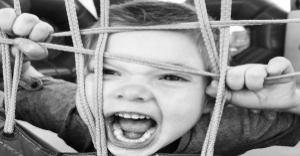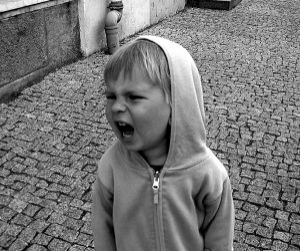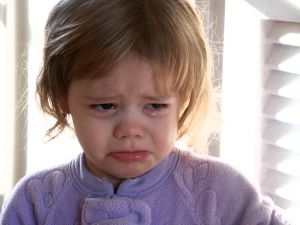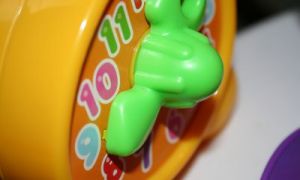Logical consequences happen as a result of the child's own actions and from choices they make about their behaviour.
Enabling a child to experience consequences for their behaviour help children to understand what happens because of their own choices.
Are Logical Consequences Effective
In managing undesired behaviour logical consequences:
- the consequence is closely tied to the behaviour and gives the child a chance to understand what happens when they don't behave in the way they are expected to.
- it does not shame or punish the child.
- it is concerned with the present and future behaviour and helps children learn to be responsible for their own actions.
- it is done in a calm environment.
- it lets children make a choice.
Steps For Using Logical/Natural Consequence
1. Identify Reasons
When a child displays undesired behaviour, it's important to try and figure out why. Children usually misbehave for these reasons:
- To get attention.
- To get power.
- To get even.
- Because they feel inadequate.
Once you understand why the child is misbehaving then the correct action can be taken.
For Example:
Lincon was playing outside with his truck. It was almost time to go to school. Mum gives him a 5-minute warning to finish with his play and put the trucks away. Lincon kept on playing because he was having fun. When mum said "one minute left" the trucks were still all outside and it was time to go.
Paying no attention to his Mother is a great way for Lincon to gain power and get attention.
2. Decide whose problem it is.
Some problems are the child's alone. When this is the case, it's often best simply to let whatever will happen, happen. As long as the consequences are not dangerous, don't interfere. This is a natural consequence.
For example:
If Lincon were playing outside when it began to rain and he would not come in, he would get wet. The natural consequence would be the discomfort of being wet from the rain.
When Lincon will not put his trucks away, his mother has the problem. Mom really needs Sam to put his trucks away before going to school. They live in an apartment where there are lots of children and the trucks might not be there when he returns from school in the afternoon. Lincon needs to be more responsible for his toys. In this case, it's time to use a logical consequence.
3. Offer choices.
When a child has to do something or behave in a certain way, the best way is to offer a choice. Make sure any choice you offer is one you can live with and does not harm the child.
For example:
“Lincon, I need you to pick up the trucks right now. If you don't they will have to be put away until tomorrow. I know you will want to play truck when you come home from school. That won't be possible unless you put them back in the house now. It's your choice.”
It's important to keep in mind that a logical consequence comes from the child's decision.
4. Stand firm.
If the child chooses a consequence, follow through with it and be consistent. This is very important when you begin using this technique. A child used to get their way through misbehaviour may try to do the same thing when choosing a logical consequence.
For example:
Lincon continued playing. Mum said, “All right, I can see you have decided not to play with your truck this afternoon.” Mum removed the truck and put it in the cupboard that Lincon could see. He began to cry. Mum remained calm and reminded Lincon that he had made a choice.
5. Talk to children about choices in a positive way.
A choice given as a way to get something is far more appealing to a child than a warning. The actual consequence is probably the same, but a power struggle is avoided because it is positive rather than threatening.
For example:
Lincoln's Mum might have rephrased her words to something like "Lincon, I want you to be able to play with your truck later. Let's bring it into the house right now so you can play with it when you come home from school. I know you really like this truck, but if you leave it out here, it might disappear as the blue one did.”
6. Let the child know when they have done something good.
As soon as a child corrects their behaviour, let them know you think it's great. All of us respond better to praise than to criticism. Sometimes it's the only way a child knows they have met your expectations.
For example:
A couple of days later, Lincon was outside playing with his truck again. Now, Mum had to go shopping and asked him to put the truck back in the house. Lincon ignored her for a minute, but when Mom reminded him that he was responsible for making sure the truck didn't disappear, Lincon picked it up and walked toward the door. Mum said, “Wow, I really like the way you're taking care of your truck. I'm proud of you!”
7. If possible, let the child help decide the consequence.
Because the problem is the child's and they are in charge of the choices they make, it's a good idea to ask them what they think a good consequence might be. This makes it more likely that the child will do what you ask. And if they choose not to do it, they were the one that decided what the consequence would be.
For example:
Lincon and Mum were discussing what might happen if he didn't bring in the truck from outside. Sam understood the reason and said that it might be taken away by another child if it were left outside. Mum mentioned t how it would be hard to buy another truck right now because it costs a lot of money. Lincon said that if the truck disappeared, he might be able to help buy a new one with some of the money he got for his birthday. They both agreed that the best solution was to bring the truck in whenever Sam wasn't playing with it.
Children can often come up with better consequences than their parents when given the chance.
Selecting Logical Consequences
Logical consequences are given by an adult but must be experienced by the child as a direct result of their behaviour. To be effective, the consequence given needs to fit the behaviour in a logical way so that the child associates the consequence with the behaviour choice.
Some examples include:
- Make a mess - clean it up
- Leave the chair out at the table - go back and tuck it in
- Hurt friends feelings - apologise
- Run inside - go back and walk
- Accidently hurt someone - apologies ask if they are ok
- Throw toys - goes over and picks them up
- A child knocks over another child's building blocks/sandcastle - the child helps clean up the mess and help the child to rebuild it.
- Takes out an activity - puts it back when finishes
Examples continued:
Four-year-old Sammy spills his milk, as he’s trying to pour it from one glass to another after you have asked him not to do that.
- Do not ask Sammy why he’s so clumsy. Do not remind him you’d asked him not to pour from one glass to the other. Do not tell him he can’t have any more milk. Do not send him for a timeout.
- Instead, say something like, “Whoops. What do we do next?”
- He will almost certainly know that he needs to get a cloth and clean it up and probably won’t mind doing that if you treat him with good-natured respect. If he doesn’t know what to do next, it may be because you haven’t invested the time in teaching him.
Three-year-old Lauren hits her brother because he’s using the toy she wants to play with.
- Do not hit Lauren or tell her to go to a timeout. Look at her as if you can’t quite believe she has done this, and say something like, “You know we don’t hit people in our family. What happens next?”
- If little Lauren doesn’t seem to know she needs to apologize, help her get there. Do some role-playing with what an apology looks like, with you and Lauren taking turns playing the role of her and her brother. Once she has told him she’s sorry and told you that she knows she shouldn’t hit people, consider what else might be going on. Is she hungry, tired, thirsty, needing a snuggle? Use her behaviour as a message to attend to what’s happening with her.
Six-year-old Polly has made a big mess. There are blocks and books and toys strewn all around the living room.
- Don’t yell. Don’t tell Polly you’ve told her a million times she has to put her things away as she finishes using them. And don’t give her a timeout. More than anything, Polly needs a time-in right now.
- Say something like, “My goodness. You have a big job ahead of you. You know what’s next, right?”
- She may grumble but stay with her on this. She’s trying to tell you something with this mess, and you want to hear it. She may be feeling overwhelmed, worried, or something else. Ask her if she wants to clean it up by herself, or if she’d like some help. If she’s unwilling to start the clean-up, start it yourself, telling her what you’re doing, and asking for her help. “How about we start with the books? Let’s put them back in the bookcase.”
- If she moves out of the room, let her know you need her to come back and do the clean-up. You might give her a few minutes grace period before you get her to bring her back, just to allow her to retain her self-respect.
- If she still resists cleaning up, tell her that you’ll clean it all up, but that you’ll put everything into a box that she won’t have access to for a day or more (depending on the situation).
To be effective, the logical consequence needs to fit the misbehaviour in a logical way so that the child associates the consequence with the misbehaviour they display. This will enable the child to take responsibility for their own actions and learn from the consequence.
References:
Logical Consequences: Helping Kids Learn From Their Mistakes, Psychology Today, 3 October 2017
Using natural and logical consequences, Univerity Of Minnesota



 Working as a childcare professional can be a challenge especially when dealing with behavioural problems which may arise. The techniques we use when dealing with
Working as a childcare professional can be a challenge especially when dealing with behavioural problems which may arise. The techniques we use when dealing with There are different types of behaviour that children can display and sometimes it can be hard to manage, especially if a child is having behavioural
There are different types of behaviour that children can display and sometimes it can be hard to manage, especially if a child is having behavioural As a parent, your behavioural expectations of your child can be higher than what is actually developmentally appropriate for your child's age.
As a parent, your behavioural expectations of your child can be higher than what is actually developmentally appropriate for your child's age.
 As Educators, there will be many instances where you will need to write about a child's behaviour. For a behaviour management plan, assessments, half-yearly or
As Educators, there will be many instances where you will need to write about a child's behaviour. For a behaviour management plan, assessments, half-yearly or As Educators when communicating with Parents (through verbal or non-verbal communication), there will be times where we need to discuss issues or concerns that may
As Educators when communicating with Parents (through verbal or non-verbal communication), there will be times where we need to discuss issues or concerns that may Challenging Behaviour is when a child does something that hurts themselves and/or other people.
Challenging Behaviour is when a child does something that hurts themselves and/or other people.
 As part of your child's development it is normal for your child to have anxiety and fears. A baby commonly shows a fearful sign to
As part of your child's development it is normal for your child to have anxiety and fears. A baby commonly shows a fearful sign to It's always difficult to bring up behavioural issues with parents, it can be nerve wrecking to tell a parent that their child misbehaves but that
It's always difficult to bring up behavioural issues with parents, it can be nerve wrecking to tell a parent that their child misbehaves but that All children deal with anger on a daily basis. Thinking about it as a child, there is a lot to be angry about. Elder people
All children deal with anger on a daily basis. Thinking about it as a child, there is a lot to be angry about. Elder people It is important to understand that your child behaviour problems could not just be from attention seeking. There are many factors to take into consideration
It is important to understand that your child behaviour problems could not just be from attention seeking. There are many factors to take into consideration


